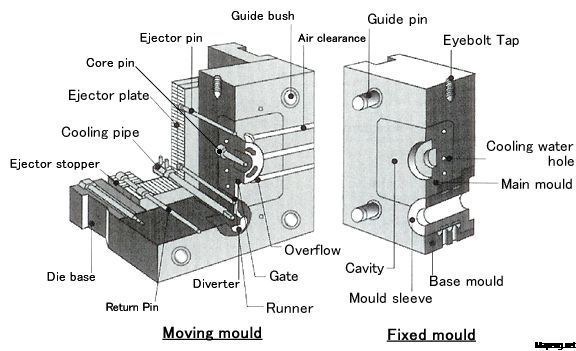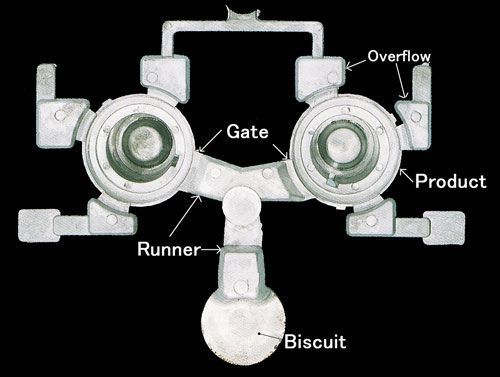壓鑄模簡介
壓鑄模具 作.一旦模具關上,模具的兩半部則會形成該零件的模穴,熔湯經由澆道填滿模穴,而形成零件的鑄品.模穴的形成是由公模仁及母模仁所組成的,分別嵌入在可動模具及固定模具上.固定模具能讓熔湯從射出系統進入模穴.可動 模具則包含支撐板及頂出系統等.當射出完畢模具打開時,可動模具的頂出梢會從公模仁內頂出鑄件品
在壓鑄的過程中,壓鑄模具一直扮演相當重要的角色且為客製化.壓鑄模具主要是由兩部份組成-固定模具及可動模具。各別裝在壓鑄機台上的固定平臺及活動平臺上.這樣的設計能允許模具沿著分模線做開闔動
Die Casting of Dies
During the process of die casting, the die casting dies always play considerably important roles. Basically the dies are composed of two halves - the cover die, which is mounted onto a stationary platen, and the ejector die, which is mounted onto a movable platen.(see picture 1) This design allows the die to open and close along its parting line. When closed, the two die halves form an internal part cavity, which is filled with the molten metal to form the casting. This cavity is formed by two inserts, the cavity insert and the core insert, which are inserted into the cover die and ejector die, respectively. The cover die allows the molten metal to flow from the injection system into the part cavity. The ejector die includes a support plate and the ejector box, which is mounted onto the platen and inside contains the ejection system. When the clamping unit separates the die halves, the clamping bar pushes the ejector plate forward inside the ejector box which pushes the ejector pins into the molded part, ejecting it from the core insert.
